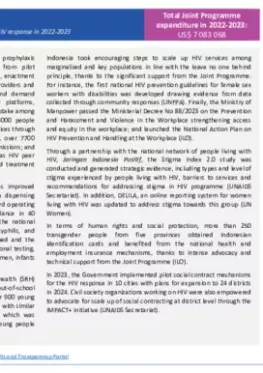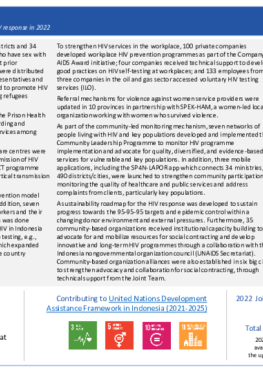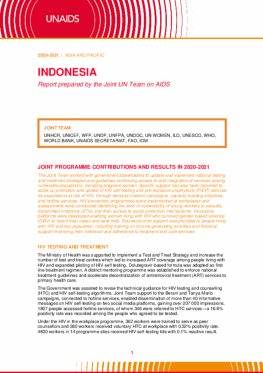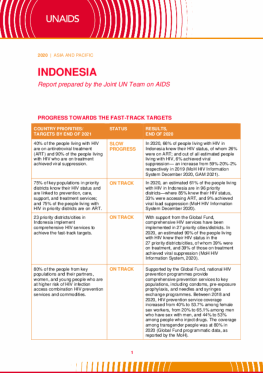|
Indonesia
The Government embarked on expanding pre-exposure prophylaxis (PrEP) across the nation following successful results from pilot programmes in 34 healthcare facilities; review of guidelines, enactment of PrEP regulation; and capacity building of healthcare providers and community workers (UNAIDS Secretariat). Awareness and demand creation materials were also disseminated using online platforms, including Saya Berani, Tanya Marlo and TestJKT increasing uptake among vulnerable key populations. As a result, 47.8% of the 8000 people accessing PrEP in 2023 were influenced to avail of these services through social media campaigns (UNAIDS Secretariat). In addition, over 7700 condoms were distributed to refugees to prevent HIV transmissions; and 46 refugee representatives and volunteers were trained as HIV peer counsellors and supported to promote HIV prevention and treatment and provide support services among refugees (UNHCR).
Access and quality of antiretroviral treatment (ART) has improved though the development of the 3-6 month multimonth dispensing (MMD) and HIV drug resistance (HIV-DR) protocols; standard operating procedure for redistribution of ART; and HIV-DR surveillance in 40 selected healthcare facilities (UNDP, WHO). In addition, the national elimination of vertical transmission of HIV, congenital syphilis, and hepatitis B (EMTCT) roadmap for 2024-2030 was developed and the revised EMTCT guidelines were aligned with latest international testing, treatment and care standards for pregnant and lactating women, infants and children (UNICEF, UNWomen, UNAIDS Secretariat).





